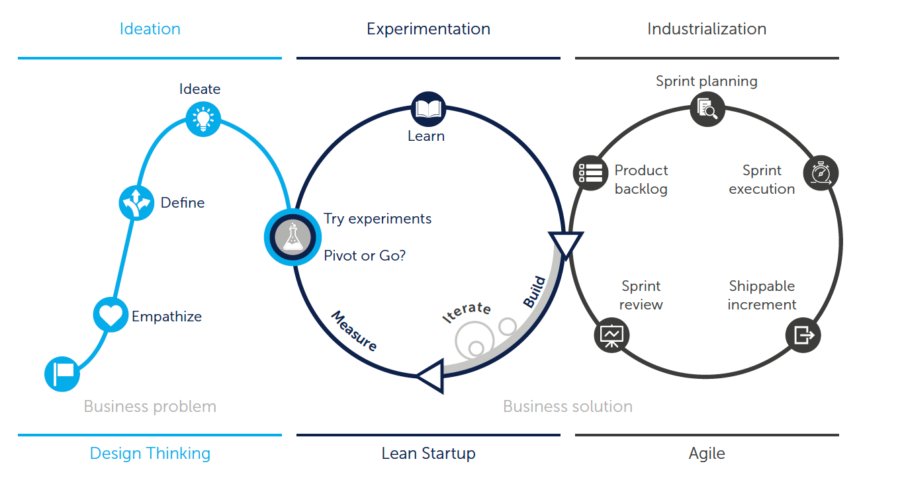The Analytics Translator — Successfully identify, develop, and execute AI use cases
The Analytics Translator is the liaison between senior management, the business, and data experts. On some days, you are the gatekeeper of the project funnel, brainstorm ideas with executives, and work with the data experts to groom the backlog of viable ideas.
Characteristics of an Analytics Translator
Learn about the characteristics of the Analytics Translator and the typical challenges this data science product owner helps to overcome.
In this article, we will shine a light on the capabilities of the analytics translator:
- Download our extensive white paper “The Analytics Translator” to develop an understanding of this must-have role.
- Do you want to develop AI solutions that generate value for your organization? Use the Use Case Ideation and AI Solution canvas to first generate ideas and then turn those ideas into value-adding AI products.
- Develop your own analytics translator capabilities by moving along the Analytics Translator learning journey or attending an Analytics Translator training courses, organized in collaboration with Xebia Academy.
- Would you like to work as an analytics translator? Experienced product owners with data science skills can check out our vacancy “Analytics Translator”.
An Analytics Translator drives the development of successful AI solutions
In recent years, numerous organizations have invested a great deal of time and money in developing their data and AI capabilities. Sold on the promises of accelerating top-line revenue growth or increasing the bottom-line, most business were off to a flying start. Now, a couple of years in, some organizations find themselves disillusioned. Stuck at running one-off analyses and proof-of-concepts that don’t add any value, they are yet to see any return on their investments.
How to overcome the most common difficulties when building AI solutions?
The analytics translator plays a key role in the journey to success with data and AI.
For many organizations, the AI journey begins with one-off analyses and proof-of-concepts. These one-off exercises provide a cheap and quick way to get started. A flashy proof-of-concept can inspire and “wow” the business. Moreover, it allows testing the waters to find out what is possible with in-house data. By showing what AI is capable of, most organizations build their initial business support and sometimes even free-up funding. While these one-offs are a great point to start, one has to realize that they are only a means to an end, not the end itself.

Successful organizations know that “inspiration is cheap while rigor is expensive”.
This makes them wary of falling into the trap of never moving past the stage of inspiration and cheap learnings. The road to value is long and winding; ideas have to be validated, value has to be measured, proof-of-concepts have to be transformed into production-worthy applications, and finally, the business has to adopt the solution. You are only able to see a positive return on investment if you make it all the way to the end. Luckily, there is a system that can help you get you there: the AI solution framework.
Three Business Problems The Analytics Translator Solves
An analytics translator enables the execution of your company’s AI strategy. Data engineers are good at developing robust applications. Data scientists are good at distilling intelligence from data. Business teams know their specific processes, habits, and workarounds like no other. Still, there is a gap between data experts and the business. Translators bridge it by solving three business problems for you.
1: Finding the Right Use Cases
Although there are many inspiring AI success stories, it is often challenging to find the use cases that fit your business needs. What are the most important business problems that can be solved with AI? Who is responsible for finding new problems and translating them into realistic use cases? Translators fill and prioritize the pipeline with new business problems for your data experts. Use cases coming from data experts often don’t align with the needs of the business, while the business either does not know what to expect or has unrealistic expectations. Knowing what is desired and what is possible, an analytics translator finds use cases that are realistic, valuable, and feasible, and that are the right fit for your company’s strategy.
2: Liaising Between Business and Data Experts
You can come up with fantastic use cases that could improve your organization’s performance, but they only provide value when they are implemented and used by the business. On one hand, the business won’t accept or embed AI solutions they don’t understand or trust. On the other hand, the traditional ways of working of the business often do not fit that of data experts. The business has to be brought into the process and connected to the data experts. As a liaison between experts and business, analytics translators guarantee that the business understands and adopts the AI solutions. While the data experts focus on the implementation, Translators make sure that the output is actionable and fits business needs. They know how to communicate a business idea to the experts and embed the result in your organization.
3: Embedding AI in Your Organization
Solving business problems using AI should not be confined to isolated business units but instead should be embedded in the organization. The adoption of AI requires not only technical changes such as building data ecosystems, but also depends on trust in AI and the integration of it into your workflows. It is very important that each and every employee understands what AI is and how it can impact the organization. We call this AI literacy. In 2016, McKinsey Global Institute introduced what they call the age of analytics and described how organizations should compete in a data-driven world. One of the most important aspects of this model is that organizations need to become more open and collaborative by breaking down silos. When business departments learn what it means to be AI-driven, and what opportunities this brings, a pull for AI-applications and solutions will arise. If this is combined with a solid data science workflow and the right skills, tools, and techniques, organizations grow towards the highest level of AI maturity. The analytics translator spreads ideas and success stories in order to make your organization AI literate. They build internal and external communities by, for instance, hosting internal innovation days, organizing hackathons, and teaching analytics workshops. Translators evangelize and educate to make your company aware of the usage and implications of data and AI.







